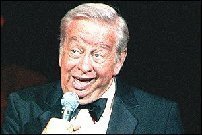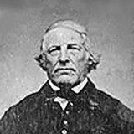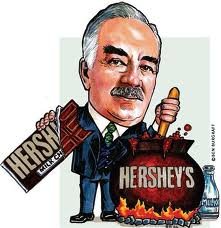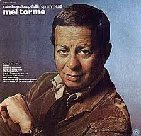Horse racing is an equestrian performance sport, typically involving two or more horses ridden by jockeys (or sometimes driven without riders) over a set distance for competition. It is one of the most ancient of all sports, as its basic premise – to identify which of two or more horses is the fastest over a set course or distance – has been mostly unchanged since at least classical antiquity.
Horse races vary widely in format, and many countries have developed their own particular traditions around the sport. Variations include restricting races to particular breeds, running over obstacles, running over different distances, running on different track surfaces, and running in different gaits. In some races, horses are assigned different weights to carry to reflect differences in ability, a process known as handicapping.
While horses are sometimes raced purely for sport, a major part of horse racing's interest and economic importance is in the gambling associated with it, an activity that in 2019 generated a worldwide market worth around US$115 billion.
Horse racing has a long and distinguished history and has been practiced in civilizations across the world since ancient times. Archaeological records indicate that horse racing occurred in Ancient Greece, Ancient Rome, Babylon, Syria, and Egypt. It also plays an important part of myth and legend, such as the contest between the steeds of the god Odin and the giant Hrungnir in Norse mythology.
Chariot racing was one of the most popular ancient Greek, Roman and Byzantine sports. Both chariot and mounted horse racing were events in the ancient Greek Olympics by 648 BC and were important in the other Panhellenic Games. It continued although chariot racing was often dangerous to both driver and horse, which frequently suffered serious injury and even death. In the Roman Empire, chariot and mounted horse racing were major industries. From the mid-fifteenth, spring carnival in Rome closed with a horse race. Fifteen to 20 riderless horses, originally imported from the Barbary Coast of North Africa, were set loose to run the length of the Via del Corso, a long, straight city street; their time was about 21⁄2 minutes.
In later times, Thoroughbred racing became, and remains, popular with aristocrats and royalty of British society, earning it the title "Sport of Kings".
Historically, equestrians honed their skills through games and races. Equestrian sports provided entertainment for crowds and displayed the excellent horsemanship needed in battle. Horse racing of all types evolved from impromptu competitions between riders or drivers. The various forms of competition, requiring demanding and specialized skills from both horse and rider, resulted in the systematic development of specialized breeds and equipment for each sport. The popularity of equestrian sports through the centuries has resulted in the preservation of skills that would otherwise have vanished after horses stopped being used in combat.
In Britain, horse racing became well-established in the 18th century. It continued to grow in popularity throughout the 18th and beyond. King Charles II (reigned 1649 to 1685) was an avid sportsman who gave Newmarket its prominence. By 1750 the Jockey Club was formed to control the Newmarket races, set the rules of the game, prevent dishonesty, and making for a level field. Epsom Derby began in 1780. The five classic races began with the St Leger Stakes in 1776. The system was complete in 1814 with five annual races. Newmarket and the Jockey Club set the standards but most of the racing took place for small cash prizes and enormous local prestige in landowners’ fields and in the rising towns. The system of wagering was essential to the funding and the growth of the industry, and all classes participated from the poor to royalty. High society was in control, and they made a special effort to keep the riff-raff out and the criminal element away from the wagering. With real money at stake, the system needed skilled jockeys, trainers, grooms, and experts at breeding, thereby opening new prestigious careers for working-class rural men. Every young ambitious stable boy could dream of making it big.
Horse racing is one of the few sports that continued during the 2020 COVID-19 crisis, with Australian and Hong Kong the two main racing jurisdictions to carry on, albeit with no crowds. The USA, United Kingdom and France were some of the more prominent racing bodies to either postpone or cancel all events.
If you want to read a whole lot more, go here:
https://en.wikipedia.org/wiki/Horse_racing
We have a local race track here, in Grants Pass.....
Need something that's classically Italian? Try our Spinach and Cheese Stromboli. Refrigerated pizza dough is our shortcut to making this tasty meal in less than 15 minutes. It's a quick and easy vegetarian stromboli recipe that's guaranteed to fill you up. We're sure you'll agree, this simple Italian dinner is unquestionably tasty.
- 1 tablespoon olive oil
- 1 (10-ounce) package frozen chopped spinach, thawed and well drained
- 4 cloves garlic, minced
- 1 cup ricotta cheese
- 1 cup (4 ounces) shredded mozzarella cheese
- 1/2 teaspoon dried oregano
- 1/2 teaspoon salt
- 1 (13.8-ounce) package refrigerated pizza dough
- Preheat oven to 425º. Coat a baking sheet with cooking spray.
- In a large skillet over medium-high heat, heat oil. Add spinach and garlic and sauté 3 to 5 minutes, or until garlic is golden. Remove from heat and allow to cool slightly.
- In a large bowl, combine ricotta and mozzarella cheeses, the oregano, and salt. Add spinach mixture and stir until well blended.
- Unroll pizza dough and with your fingertips or the heel of your hand, spread dough out to a 10- x 15-inch rectangle. Cut in half lengthwise to make two 5- x 15-inch rectangles. Spread half the spinach mixture onto each piece of dough, leaving a 1/2-inch border around the edge. Fold each piece of dough over and pinch the edges to seal securely. Place on prepared baking sheet.
- Bake 10 to 12 minutes, or until golden brown.
2001 – Civilian aircraft traffic resumes in the U.S. after the September 11, 2001 attacks.
1857 – Milton S. Hershey, American confectioner (d. 1945)

1939 – Richard Kiel, American actor (d.2014)

1944 – Jacqueline Bisset, British actress

1951 – Jean Smart, American actress


1956 – Anne Geddes, Australian photographer

On September 13th, the United States recognizes Uncle Sam Day. The day commemorates the man behind the iconic image. The fascinating nickname for the United States government was born on September 13, 1766.
Sam Wilson, a meat packer from New York, supplied barrels of meat to soldiers during the war of 1812. To identify the meat for shipment, Wilson prominently stamped “U.S.” on the barrels. It wasn’t long before the soldiers dubbed the grub a delivery from Uncle Sam. As such nicknames tend to do, its popularity spread.
The first illustration of Uncle Sam is unlike the one we know today. Published by Harper’s Weekly in 1861, the young government representative (a starred bandanna on his head and wearing a striped vest) is depicted dividing up Virginia like a butcher. Through the years, the image of Uncle Sam would take many forms.
Credit is given to German-born illustrator and cartoonist Thomas Nast for developing the long-legged Uncle Sam we know today. With the starred top hat and striped pants, the Uncle Sam debut in Harper’s Weekly, also. He took on many issues with Nast as his illustrator. Some of the issues topics included Boss Tweed, Union recruitment, and Reconstruction.
During the modern era, Uncle Sam obtained some color. The United States Army awarded Montgomery Flagg with the artwork for the familiar portrait used in the “I Want You For The U.S. Army” campaign during World War I. It first appeared on the cover of Leslie’s Weekly, an illustrated literary and news magazine.
UNCLE SAM DAY HISTORY
President George H. W. Bush proclaimed Uncle Sam Day to be September 13, 1989, in honor of the anniversary of the birth of Samuel Wilson. It coincided with the bicentennial celebration of the City of Troy, New York where Wilson lived and worked. The City of Troy requested the designation of the President.
On September 7, 1961, through concurrent resolutions, Congress officially named Uncle Sam as a permanent symbol of American strength and idealism.















